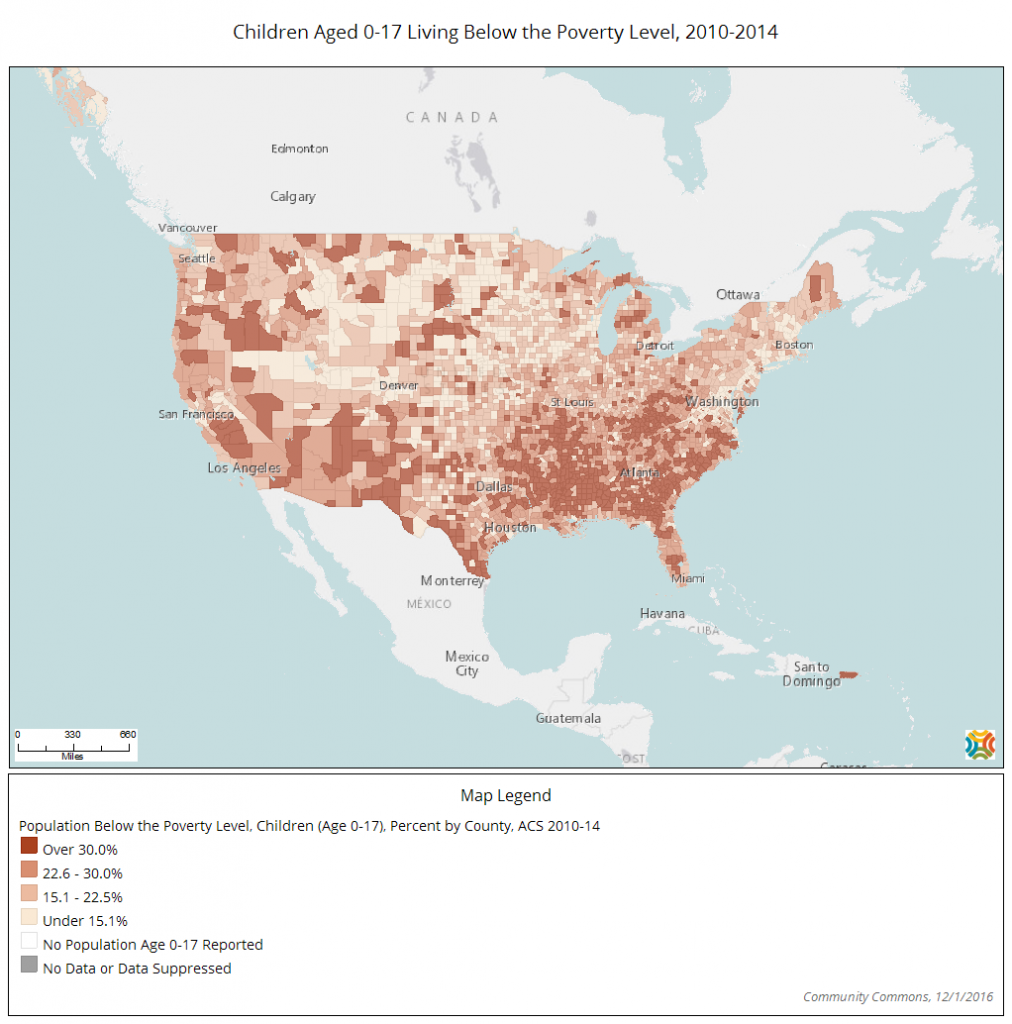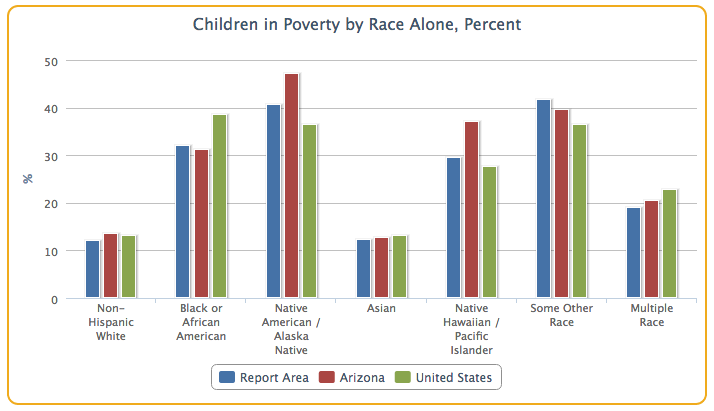Seven Things You Should Know About Childhood Poverty
- Published By
- Community Commons
This article was written by Caroline Ratcliffe and Nicole Levins. It was originally published in October of 2016 on Urban Wire.
For millions of poor children, the United States is not the land of opportunity. Childhood poverty can have lifelong consequences, affecting future health, education, earnings, and more.
These consequences can even stretch into future generations. Many poor children grow up to become poor adults, and as they have children of their own, the cycle of poverty continues.
What else should you know about childhood poverty?
- Poverty affects millions of American children. Today, one in five American children are poor, and nearly two in five will be poor for at least one year before they turn 18. That’s roughly 29 million children.

- When babies are born poor, they often stay poor. Half of babies born into poverty will be persistently poor, meaning they will spend at least half their childhoods in poverty.
- Poverty affects children of all races… About one in three white children and three out of four black children are poor for at least one year before age 18. In absolute numbers, more white children than black children are poor. Hispanic children are also disproportionately affected.

- …but when it comes to persistent poverty, the racial gap is starker. About 5 percent of white children and 40 percent of black children experience persistent poverty.
- Child poverty dims future academic success. Early poverty is linked to toxic stress, which can harm children’s brain development, lower IQ scores, and reduce academic achievement. Children who experience poverty between birth and age 2 are 30 percent less likely to graduate from high school than children who become poor later in childhood.
- Inaction has a steep price tag. Child poverty costs an estimated $500 billion per year when you add up expenses like lost productivity, crime, and poor health—substantially higher than the estimated $77 billion per year it would take to lift 60 percent of children out of poverty.
- The cycle of poverty is hard to break, but it’s not impossible. Strategies include:
- Reaching poor children as early as the day they’re born. Since most children in the United States are born in hospitals, that’s a great place to start. Social workers could connect newborns and new moms to programs that can help them avoid the poverty trap, such as public health insurance, food assistance, and even home-visiting opportunities and parenting classes.
- Ramping up educational opportunities for children and their parents. Getting children in Head Start and other school readiness programs prepares them for primary school. Additional funding for Early Head Start would expand the reach of educational and other supports for younger children and their families. And workforce programs that help parents gain skills, get jobs, and advance in the workplace can help the whole family.

- Helping kids stay in the same schools when struggling families move. Poverty and housing instability are deeply connected, and a family move can disrupt a child’s education. Flexible policies that let kids stay in the same school when they move across school boundary lines could improve academic performance.
- Enacting place-conscious strategies. We need policies that address neighborhood conditions and help poor families move out of disadvantaged neighborhoods to places with better schools and more opportunities.
To read the original article, click here.
View StoryRelated Topics


